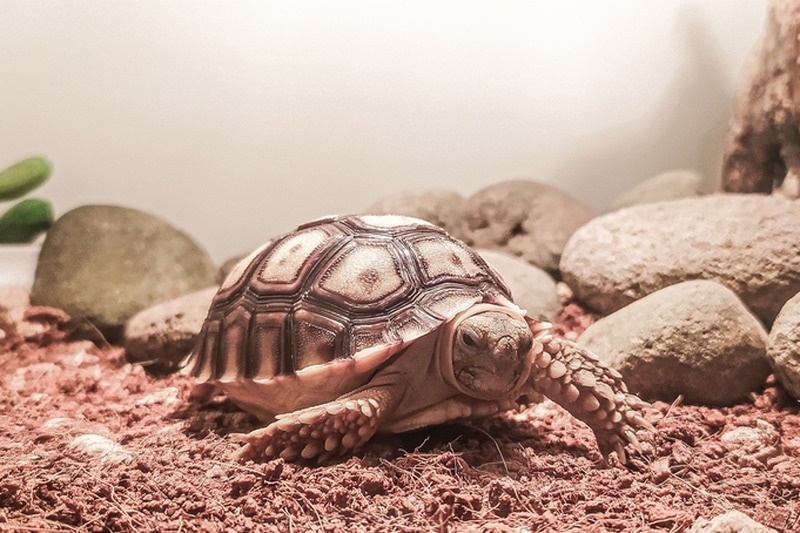10 Types of Turtles That Are Kept as Pets (With Pictures)
Updated on
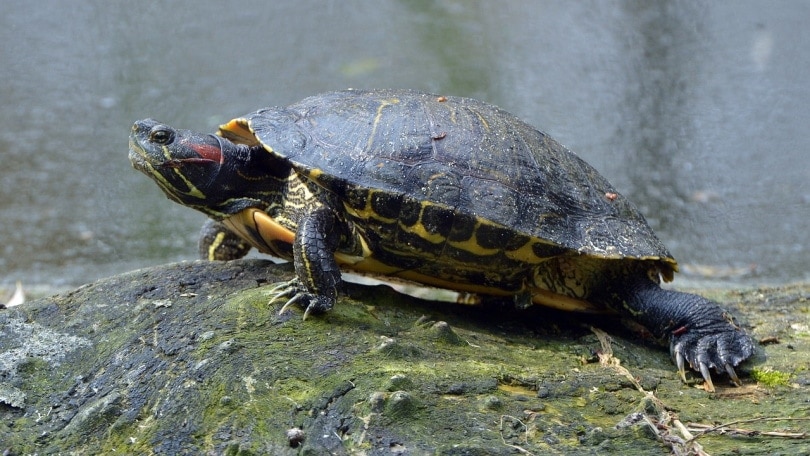
Turtles can make interesting and unique pets, particularly compared to dogs and cats. They are fairly undemanding, can be fascinating to watch, and make wonderful companions for children and adults alike.
But it’s important to bear in mind that they still need specific care, especially when it comes to their habitats and diet.
Each turtle on this list can be a great pet, and we touch on a few of the specific care requirements for each one. This way, you can easily decide which species might be your next best pet.
The 10 Types of Turtles That Are Kept as Pets
1. African Sideneck Turtle
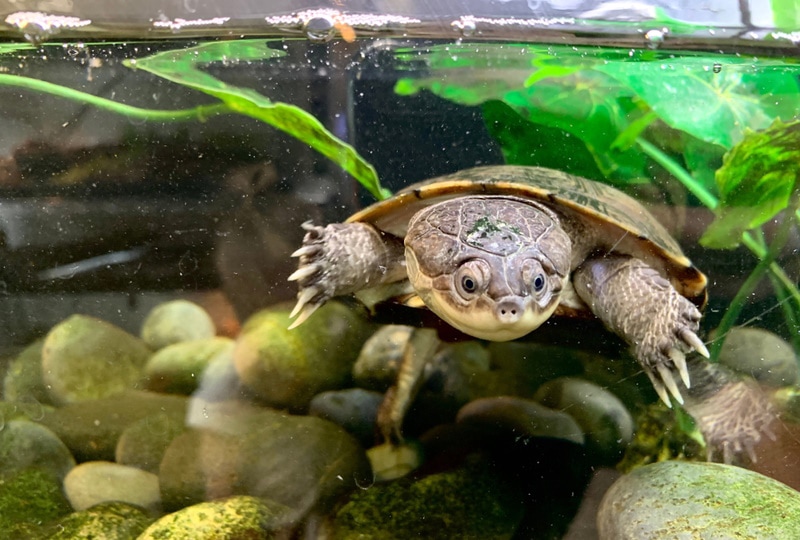
| Size | 7–12 inches |
| Lifespan | 20–30 years |
| Diet | Veggies, insects, krill, live fish, worms, aquatic turtle pellets |
The African Sideneck has an unusual name because they are an unusual species. They are unable to pull their head into their shell, so they tuck it to the side instead.
They aren’t the best choice for someone new to turtle care, primarily because of their moderate size, long lifespan and the fact that maintaining the necessary water conditions can be challenging. They spend a great deal of time in the water, so you’ll need a top-notch filtration system.
They are curious and active turtles, but like most aquatic turtles, they don’t always appreciate being handled. They are prone to biting if stressed.
- Can right themselves when upside down with their strong necks
- Active and fun to watch
- Hardy and undemanding
- Bigger than other common turtles
- Need a large habitat with excellent water conditions
2. Common Musk Turtle

| Size | 3–5 inches |
| Lifespan | 30–50 years |
| Diet | Crickets, earthworms, shrimp, fish, aquatic insects, turtle pellets |
Also known as the Stinkpot, the Common Musk Turtle can be a stinky pet when they feel threatened. They are popular as pets because they are small, but they have specific care needs that shouldn’t be taken lightly.
They need shallow water because they aren’t known to be strong swimmers, and they can be feisty and are known to scratch and bite if they are stressed. But they are easier to care for than many other species.
- Small turtles
- Easier to care for than other species
- Can be stinky when stressed
- Might be aggressive if handled
3. Eastern Box Turtle
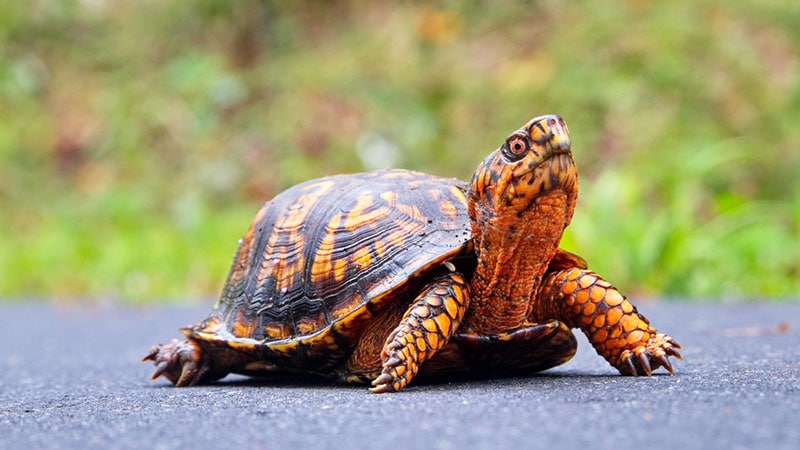
| Size | 5–7 inches |
| Lifespan | 40–80 years |
| Diet | Veggies, grass, insects, krill, fish, worms, slugs, grasshoppers |
Eastern Box Turtles are fairly adaptable. They need a humid environment and are not aquatic (most box turtles live on land). They need specific environmental conditions, which means their habitat must be warm and humid, with moist substrate and shallow pools of water.
These turtles are quite eye catching and tend to be shy but not that aggressive. They are most active during the day and will easily recognize you and your voice after a while.
- Eye-catching turtles
- Active during the day
- Develop distinct personalities
- Need a large habitat
- Can be quite shy
4. Mississippi Map Turtle
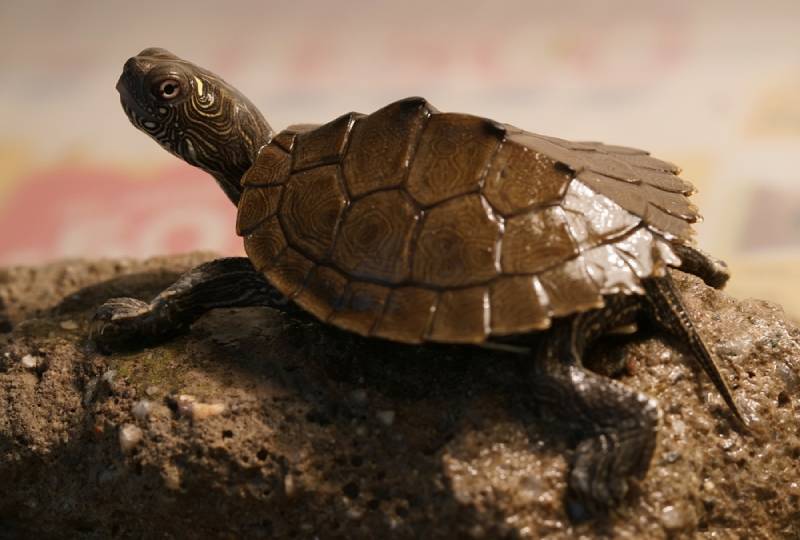
| Size | 4–10 inches |
| Lifespan | 15–30 years |
| Diet | Krill, fish, worms, insects, veggies, dark, leafy greens, turtle pellets |
Mississippi Map Turtles don’t need as large enclosures as some other aquatic turtles, which is appealing for some potential owners. They are hardy and less prone to health issues with the right care.
They are warier than other turtles, so they might become stressed out easily if handled too often. But these are true aquatic turtles that much prefer being in the water than on land.
- Enclosures don’t need to be too large
- Hardy and not that prone to health issues
- Prefer being in the water
- Get stressed out with too much handling
- Warier of people than some other species
5. Red-Eared Slider
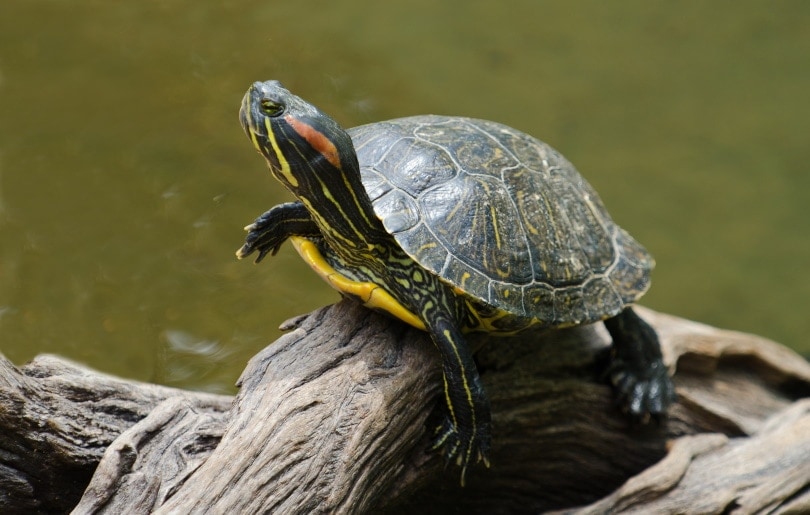
| Size | 6–12 inches |
| Lifespan | 20–30 years |
| Diet | Leafy greens, aquatic plants, crickets, worms, vegetables |
Red-Eared Sliders are generally the most popular aquatic turtles primarily because they are more sociable than many other turtles. They are active but grow to a moderate size, so they need a large habitat.
They can be expensive to look after because of their size, but in the right environment, they tend to be healthy and hardy turtles.
- Friendlier than other turtles
- Active and fun to watch
- Healthy and hardy species
- Need a large habitat
- Can be expensive to look after
6. Reeve’s Turtle

| Size | 6–9 inches |
| Lifespan | 10–20 years |
| Diet | Leafy greens, fish, worms, insects, turtle pellets |
The Reeve’s Turtle is considered one of the friendliest of the turtles and is known to warm up to occasional handling, which isn’t a common trait in aquatic turtles. But they still shouldn’t be overhandled, which can cause them stress.
They are active, making them a joy to watch, and they are generally healthy turtles, though they don’t have as long a lifespan as most other species.
- One of the friendliest turtles
- Don’t need a large enclosure
- Great for beginners
- Not a long lifespan compared to many other turtles
7. Spotted Turtle
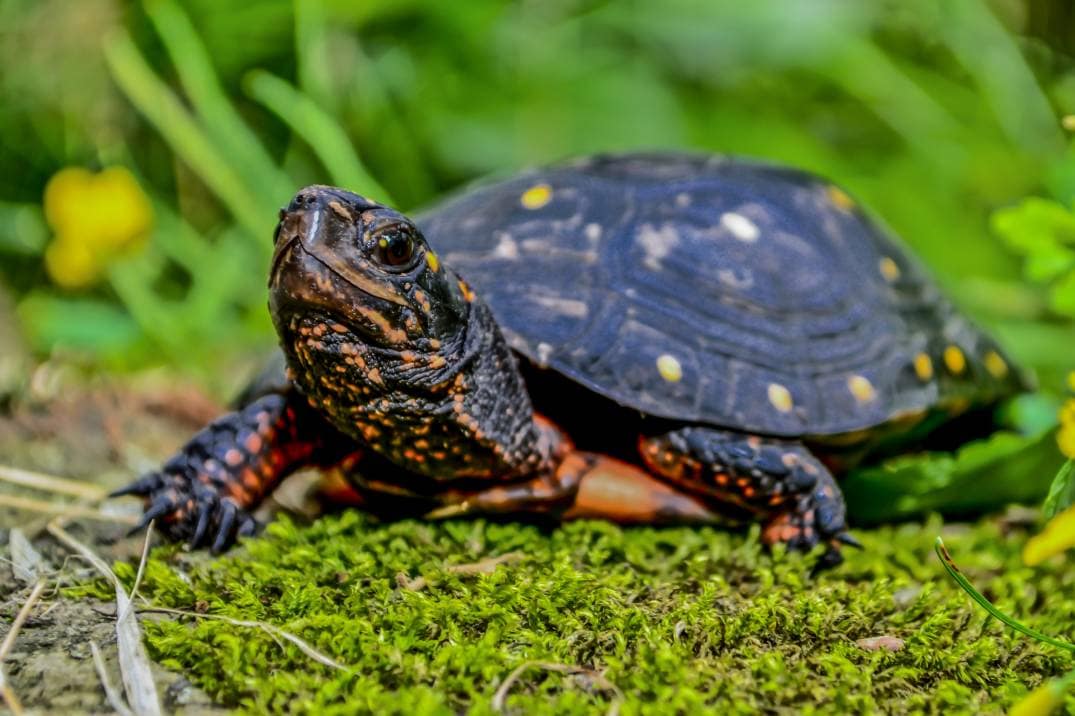
| Size | 4–5 inches |
| Lifespan | 50+ years |
| Diet | Greens like collards and dandelions, worms, crickets, krill, minnows, snails, turtle pellets |
Spotted Turtles are unusual in appearance, with a dark shell featuring small yellow or orange spots that also appear on their heads. These small turtles can live outside or inside as long as the conditions are right.
They aren’t strong swimmers, so the water should be shallow with plenty of basking areas. The Spotted Turtle is also known to live up to 100 years, so they might very well outlive you!
- Uniquely spotted shell
- Small turtles
- Long lived
- Complex housing needs
8. Western Painted Turtle

| Size | Up to 10 inches |
| Lifespan | Up to 50 years |
| Diet | Leafy greens, floating turtle pellets, insects, fish |
The Painted Turtle has several different species, so while we’re focusing on the Western Painted Turtle, be sure to take a look at the others (Eastern, Southern, and Midland).
They are attractive turtles with unique markings, and while they are only moderately sized, they need a large habitat.
- Attractive with unique markings
- Docile
- Need a large habitat
- Shy
9. Wood Turtle
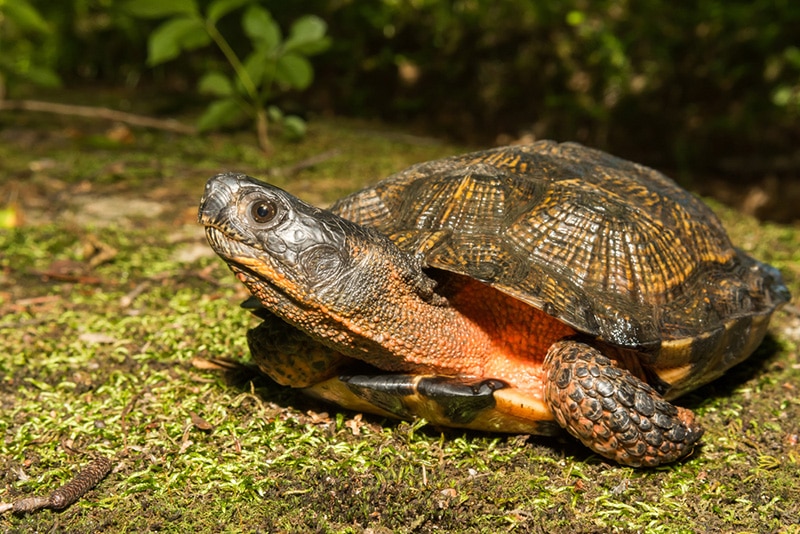
| Size | 5–8 inches |
| Lifespan | Up to 50 years |
| Diet | Leafy greens, turtle pellets, crickets, guppies, krill |
The Wood Turtle gets their name from the beautiful pattern of tan and brown on their shells. They are a rare species kept as pets, though the Ornate Wood Turtle is slightly more common.
They are semi-aquatic turtles spending time both in the water and on land, so their habitat must reflect this. They are quite friendly and hardy turtles, with fewer needs than some aquatic turtles. They are usually better off outside if your local climate allows it as they need a large enclosure.
They are fascinating to watch because they are active and don’t scare as easily as most other species. They are also curious and have been known to do problem-solving.
- Quite friendly
- Hardy and easier to take care of than most other turtles
- Active and fun to watch
- Hard to find and illegal to keep in certain States
- Need a large enclosure
10. Yellow-Bellied Slider
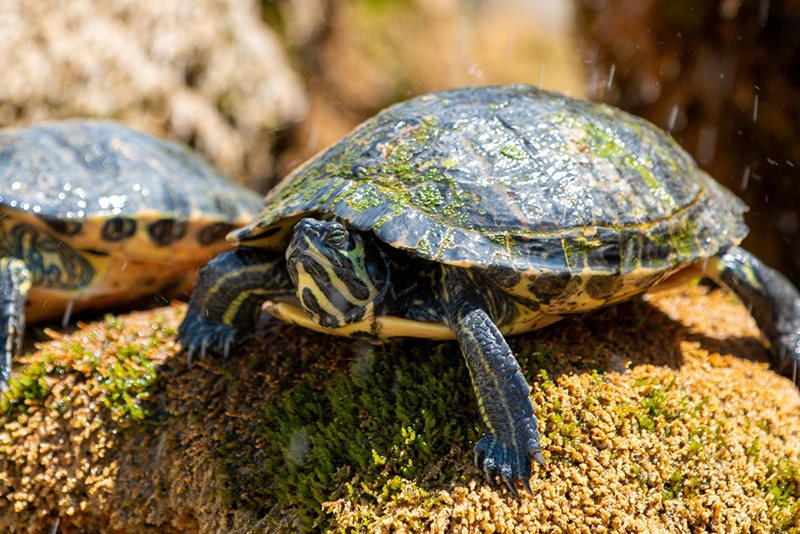
| Size | 5–13 inches |
| Lifespan | Up to 40 years |
| Diet | Leafy greens, meal worms, wax worms, feeder fish, crickets |
Yellow-Bellied Sliders are popular turtles for pets and great for beginners. They are active during the day, so this can be appealing to turtle owners who enjoy watching them, but they need large enclosures due to their size.
After a while, they are known to develop unique personalities, and since they are easy to find, they aren’t expensive.
- Great turtles for beginners
- Develop unique personalities
- Active during the day
- Can be hardy
- Larger turtles that need large enclosures
Things to Know About Pet Turtles
Salmonella
Turtles are known for certain diseases and bacteria that can be passed to humans, most notably Salmonella. If you’re new to turtle ownership, you should know that you must always wash your hands carefully after handling your turtle.
People can get Salmonella by coming into contact with turtles or their habitats. This can be of particular concern with children, who are at higher risk of infection and are more likely to not wash their hands after touching them and transferring salmonella to their mouths. Salmonella infection can cause headache, fever, diarrhea, and stomach cramps and can lead to blood poisoning.
Breeds to Avoid
You now know what kind of turtles make good pets, but to be thorough, let’s go over the turtles that beginners should avoid. These reptiles need specialized care and a large living space, and they don’t have the right temperament for newcomers.
First, don’t take a turtle out of the wild and make them a pet because they aren’t likely to do well in captivity. Also, don’t purchase turtles in tourist shops; your turtle should come from a legitimate breeder.
Second, avoid snapping turtles. While these are intriguing reptiles, they are aggressive and can cause serious injuries with their powerful jaws. Plus, they can grow as big as 1.5 feet, so they need a very large enclosure.
Lastly, soft-shelled turtlesgrow quite large and are sensitive to water quality. Additionally, the soft shell makes it easier for them to become injured. Like the snapping turtle, they can be quite aggressive.

 Conclusion
Conclusion
The first thing that you should know when owning a pet turtle is how long they live. Some turtles are capable of living more than 50 years and even as long as 100 years! Therefore, you must be aware that they might outlive you and are a big commitment.
You must also do your homework when you’ve decided to adopt a specific species. You’ll need to ensure that you properly set up the habitat, which includes the basking lamps and rocks, food, and the care that goes into the upkeep of the enclosure.
Turtles are fascinating reptiles that are fun to watch and a pleasure to own, and any of the turtles on this list can make an excellent shelled companion.
Featured Image Credit: Dieter Seibel, Pixabay



